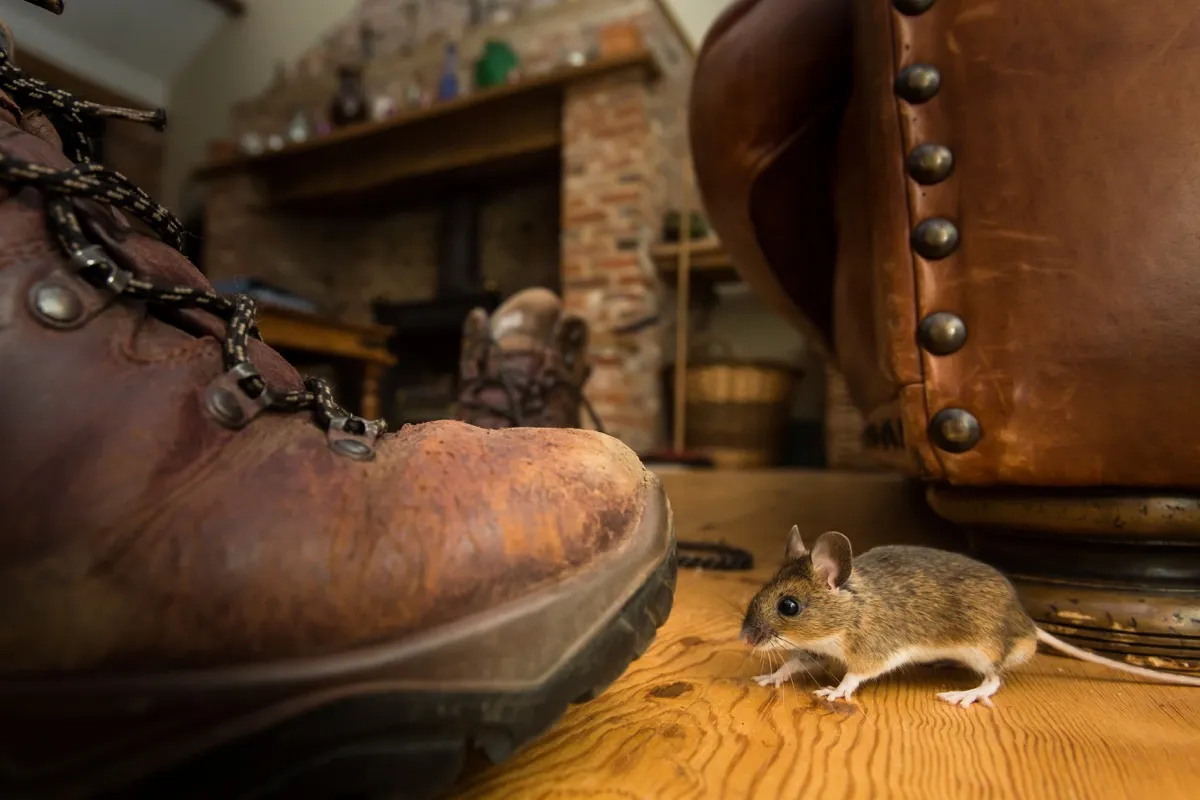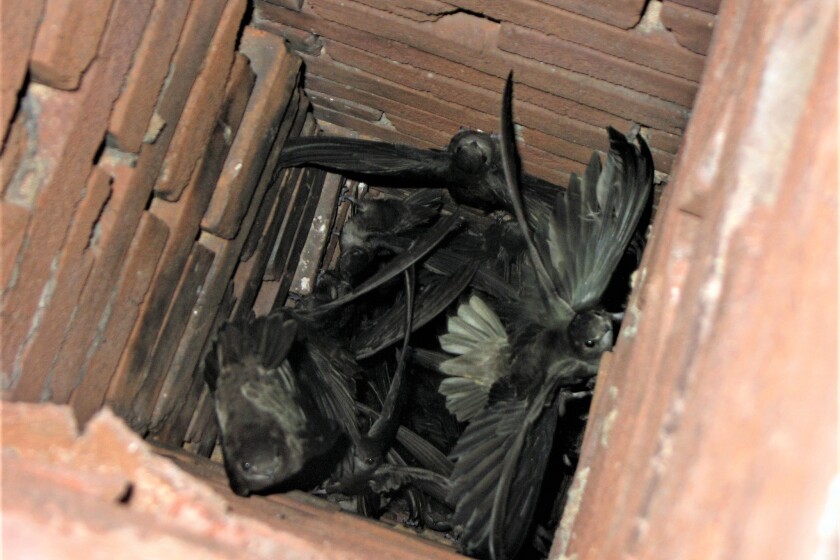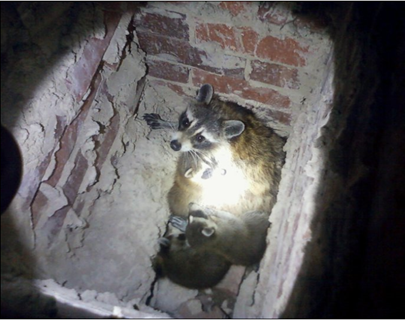
A fireplace brings warmth and charm to a home, but an unwelcome guest in your chimney? Not so charming. Hearing strange noises coming from your fireplace is unsettling, to say the least. Scratching, rustling, and the occasional thump can quickly turn a cozy evening into a stressful guessing game of “What’s living in my chimney?”
Before you envision a family of bears setting up camp (unlikely, but we’ve all been there!), let’s explore the usual suspects and how to safely and humanely show them the door… or rather, the chimney cap.
Why is My Chimney So Inviting?
To understand how to evict these unwanted tenants, it’s helpful to understand why they find your chimney so appealing in the first place.
- Shelter from the Storm: Chimneys provide a safe haven from harsh weather conditions like rain, wind, and extreme temperatures.
- Predator Protection: The height and enclosed structure of a chimney offer excellent protection from predators, making it an ideal nesting spot.
- Prime Real Estate: Let’s face it, a chimney is basically a hollowed-out tree in the middle of your house. This is particularly attractive to animals who naturally seek out such spaces in the wild.

Common Chimney Creatures (And How to Say “Goodbye”)
Here’s a rundown of the usual suspects you might find lurking in your chimney, along with tips on how to evict them responsibly:
1. Bats in the Belfry (or Chimney)
Bats are notorious for seeking out dark, quiet places to roost, and your chimney fits the bill perfectly. You’ll likely hear them fluttering and squeaking, especially around dusk and dawn when they’re most active.
Humane Eviction Tactics:
- Seal the Exits: First and foremost, close your fireplace damper to prevent bats from entering your living space. Then, inspect your chimney for any cracks or gaps where they might be getting in. Seal these entry points with a sturdy material like steel mesh, which bats can’t chew through.
- One-Way Door Policy: Install a one-way exclusion door at the chimney’s entrance. This allows bats to exit but prevents them from re-entering.
- Call in the Pros: Bats are protected in many areas, so it’s crucial to consult with a wildlife removal professional if you suspect a bat infestation. They can safely and legally remove the bats and advise on preventing future intrusions.

2. Mice: More Than Just a Nuisance
Mice are resourceful and excellent climbers, making your chimney an easy target. You might hear them scurrying at night and notice droppings near the fireplace.
Humane Eviction Tactics:
- Seal the Deal: Like with bats, sealing any gaps or cracks in your chimney is crucial. Pay close attention to areas around vents, pipes, and the roofline.
- Set the Traps: Place humane, no-kill traps around the fireplace and chimney opening. Bait them with peanut butter or nesting material to lure the mice in.
- Resist the Poison: Avoid using poison, as a dead animal in your chimney can create a terrible odor and attract other pests.

3. Birds: Not Always a Welcome Song
Birds, especially chimney swifts and sparrows, might build nests in your chimney. You’ll hear chirping and pecking, and might even spot nesting materials falling down into your fireplace.
Humane Eviction Tactics:
- Let There Be Light (and Sound): Open the fireplace damper and make loud noises or shine a bright light up the chimney to encourage the bird to leave on its own.
- Gentle Removal: If the bird is trapped, you can carefully capture it with a towel and release it outside. Remember to wear gloves and a mask to protect yourself from potential parasites.
- Nest Removal: Once the bird has vacated, remove the nest to prevent future nesting attempts. If you encounter eggs or baby birds, contact a wildlife professional for assistance.

4. Squirrels: Acrobatic Intruders
Squirrels are notorious for their climbing skills, but sometimes they take a tumble down a chimney and find themselves stuck.
Humane Eviction Tactics:
- Rope to the Rescue: Lower a thick rope down the chimney to provide the squirrel with a way to climb out.
- Baby Steps: If you find baby squirrels, carefully remove them with gloved hands and place them in a box near the chimney base. The mother squirrel will likely relocate them to a new nesting site.
5. Raccoons: The Ultimate Chimney Dwellers
Raccoons love chimneys, especially pregnant females seeking a safe place to have their kits. You’ll likely hear them moving around, particularly at night.
Humane Eviction Tactics:
- Noise Complaint: Raccoons are sensitive to noise, so try playing loud music or banging pots and pans near the fireplace to encourage them to leave.
- Raccoon Eviction Fluid: This natural repellent mimics the scent of a male raccoon, making the female feel threatened and encouraging her to relocate.
- Professional Help: Raccoons can be aggressive, so if you’re uncomfortable dealing with them, contact a wildlife removal professional.

Prevention: The Best Defense
Once you’ve evicted your unwelcome guests, it’s time to prevent future intrusions:
- Cap Your Chimney: Installing a chimney cap is the single most effective way to keep animals out. Choose a cap with a sturdy mesh screen that allows smoke to escape while preventing animal entry.
- Regular Inspections: Inspect your chimney annually for any damage or gaps that could serve as entry points for critters.
- Trim Overhanging Branches: Trim back any tree limbs that are close to your roof or chimney, as these can provide a pathway for animals to access your home.
Resources for Humane Wildlife Removal:
- Humane Society of the United States: https://www.humanesociety.org/
- The Wildlife Center: https://www.wildlifecenter.org/
- Your Local Animal Control: A quick online search will provide contact information for your local animal control agency.
Remember, dealing with wildlife requires patience and caution. By following these tips and seeking professional help when needed, you can evict those chimney dwellers and enjoy a peaceful, critter-free home.








